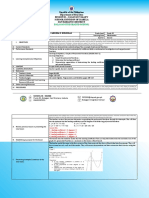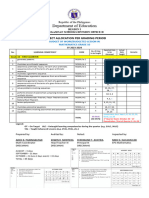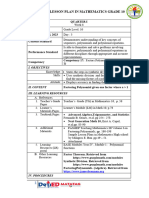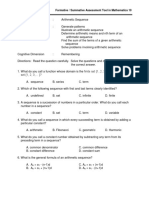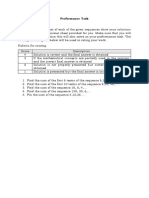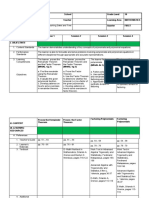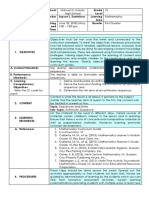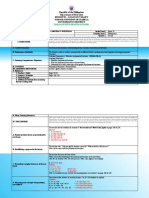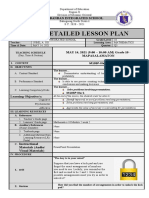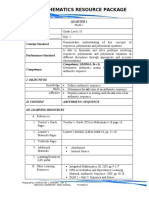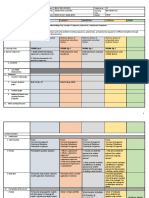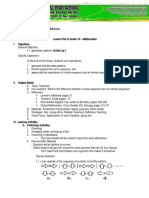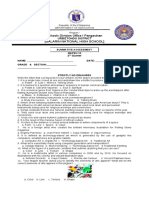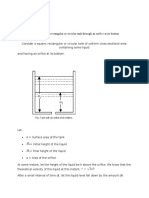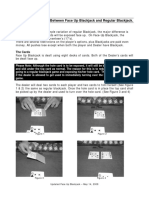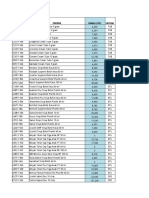0% found this document useful (0 votes)
956 views5 pagesGenerating Patterns LP1
This document contains a detailed lesson plan for a mathematics class on generating patterns. The lesson objectives are for students to be able to define patterns, recognize patterns in sequences, determine missing numbers/figures in patterns, and construct their own examples of patterns. The lesson will begin with an introductory math game involving puzzles to motivate pattern recognition. Examples of numeric and shape patterns will then be presented and students will practice identifying, extending, and describing the patterns. They will complete a group activity and individual exercises to reinforce these skills before constructing their own pattern examples to conclude the lesson. The goal is for students to understand patterns as recurring models or designs.
Uploaded by
cynthia palisocCopyright
© © All Rights Reserved
We take content rights seriously. If you suspect this is your content, claim it here.
Available Formats
Download as DOCX, PDF, TXT or read online on Scribd
0% found this document useful (0 votes)
956 views5 pagesGenerating Patterns LP1
This document contains a detailed lesson plan for a mathematics class on generating patterns. The lesson objectives are for students to be able to define patterns, recognize patterns in sequences, determine missing numbers/figures in patterns, and construct their own examples of patterns. The lesson will begin with an introductory math game involving puzzles to motivate pattern recognition. Examples of numeric and shape patterns will then be presented and students will practice identifying, extending, and describing the patterns. They will complete a group activity and individual exercises to reinforce these skills before constructing their own pattern examples to conclude the lesson. The goal is for students to understand patterns as recurring models or designs.
Uploaded by
cynthia palisocCopyright
© © All Rights Reserved
We take content rights seriously. If you suspect this is your content, claim it here.
Available Formats
Download as DOCX, PDF, TXT or read online on Scribd
/ 5




